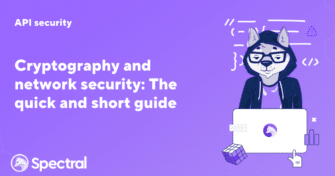What is OS Hardening and How Can Developers Implement it
As cyber threats become increasingly advanced and complex, organizations are forced to adopt a military attitude of ‘war footing’ to secure their systems and servers. Although
Large language models (LLMs) are transforming how we work and are quickly becoming a core part of how businesses operate. But as these powerful models become more embedded, they also become prime targets for cybercriminals. The risk of exploitation is growing by the day.
More than 67% of organizations have already incorporated LLMs into their operations in some way – and over half of all data engineers are planning to deploy an LLM to production within the next year. This rapid adoption is a double-edged sword – while it signifies innovation and progress, it also means that cybercriminals are sharpening their focus on these new technologies.
To stay ahead, LLM security must be integrated into your broader security protocols from day one – especially if you’re leveraging them in enterprise environments with sensitive data. An LLM security checklist can help you incorporate secure protocols and measures in an organized way.
LLM security focuses on protecting large language models from threats that could compromise their accuracy and user safety. Large language models (LLMs) such as OpenAI’s GPT-4, Google’s Bard, and Microsoft’s Azure AI are increasingly being utilized for mission-critical tasks, from enhancing customer interactions to streamlining complex data analyses.
Image source: LLMOps Essentials: A Practical Guide to Operationalizing Large Language Models
However, it’s important to understand that these models are vulnerable to attacks such as model poisoning, where harmful data disrupts their training, and adversarial attacks, where inputs are designed to deceive them. There’s also the risk of unauthorized access, which could lead to breaches of proprietary, user, or training data.
The sophisticated architecture and expansive datasets involved in LLMs create unique vulnerabilities that may not exist in other areas of software development. One example is the risk of adversarial manipulation, which can compromise the integrity of your models. These security challenges are further complicated by evolving compliance demands, as highlighted by new SEC regulations focused on improving cybersecurity transparency.
Image source: Large Language Model Security
A security checklist provides a comprehensive method to systematically handle these risks. More specifically, an XLS checklist facilitates easy tracking of LLM security measures, allowing for straightforward updates and reviews. This format also supports detailed documentation of security practices, which is crucial for verifying compliance and preparing for audits.
Regular monitoring and logging of LLM activity is a key component of this security checklist, helping to detect anomalies before they escalate. Implementing such practices can also improve operational performance by lowering change failure rates, a critical metric for maintaining reliability.
LLMs are prone to several security issues, including adversarial attacks, data leakage, and unauthorized access. These vulnerabilities can be further complicated by mismanagement in handling third-party dependencies. Tools like NPM audit for dependency scanning help mitigate risks by catching vulnerabilities early in the development cycle, especially in code dependencies.
Additionally, governance and compliance play a crucial role in protecting LLMs in enterprise environments. By automating key compliance tasks, organizations can streamline audits, reduce human error, and ensure ongoing adherence to security protocols, similar to compliance automation tools.
Here are the top common security threats for LLMs.
Image source: What Are Large Language Models Capable Of: The Vulnerability of LLMs to Adversarial Attacks
Additionally, ensuring that LLM outputs are properly sanitized is essential for preventing the spread of malicious content. This practice aligns with broader efforts to secure the entire software supply chain, where security risks must be addressed at each stage of the development pipeline, including SaaS security.
In highly sensitive environments, applying mandatory access control (MAC) can provide an additional layer of security by tightly regulating access to critical data, ensuring security remains robust even across distributed systems.
The LLM Security Checklist addresses risks that could emerge from initial model development through continuous monitoring. To make the most of the checklist:
Image source: Understanding Web-Based LLM Attacks: Insights and Examples
The world of AI is changing by the minute. As threats to LLMs become more sophisticated, a proactive approach to security is essential. With SpectralOps’ LLM Security Checklist, you gain access to a targeted toolkit designed to address the specific vulnerabilities in your LLM deployments. This comprehensive XLS checklist provides actionable steps for protecting your models from data leaks, adversarial attacks, and more.
Download the checklist now to protect your LLM deployments.

As cyber threats become increasingly advanced and complex, organizations are forced to adopt a military attitude of ‘war footing’ to secure their systems and servers. Although

There is an old joke among cybersecurity professionals that the only way to truly secure your data is to keep it on a machine without connection

If you read the news, you’ve encountered the term “Magecart” multiple times in recent years. The term refers to several hacker organizations that use online skimming